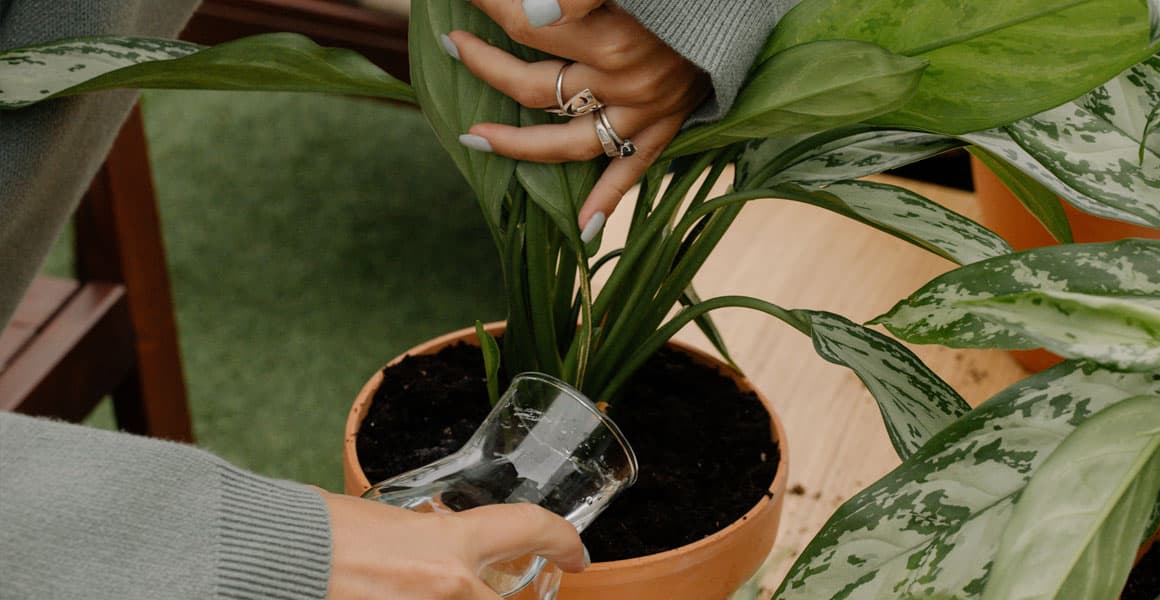Watering is a fundamental aspect of houseplant care, and getting it right is crucial for the health and well-being of your green companions. While watering may seem simple, it’s often a source of confusion for many plant enthusiasts. In this article, we will delve into the essential guidelines for watering your houseplants, helping you strike the perfect balance and ensure their optimal growth.
Keeping Your Green Companions Hydrated and Thriving

Understand Your Plant’s Watering Needs
Different houseplants have varying water requirements. Some prefer consistently moist soil, while others thrive in drier conditions. Research the specific needs of your plants to understand their watering preferences. Factors like the plant species, size, potting mix, and environmental conditions all influence the watering requirements.
Check the Soil Moisture
Before watering, always check the moisture level of the soil. Insert your finger about an inch or two into the soil. If it feels dry at that depth, it’s time to water. If it’s still moist, hold off watering for a few more days. Avoid relying solely on the surface appearance, as the top layer may dry out faster than the deeper roots.
Watering Techniques
The goal is to water thoroughly but not excessively. Slowly pour water onto the soil until you see it draining out of the bottom of the pot. This ensures that the entire root ball is evenly hydrated. Avoid spraying water on the leaves, as it can promote fungal diseases. For small plants or those in hanging baskets, you can use the bottom-up watering method by placing the pot in a tray filled with water and allowing the roots to absorb moisture.
Drainage is Key
Adequate drainage is vital to prevent waterlogged roots, which can lead to root rot. Always choose pots with drainage holes to allow excess water to escape. If using decorative pots without drainage, ensure there is a way to remove excess water or consider using a nursery pot that fits inside the decorative container. Remove any standing water from saucers or trays to avoid water accumulation.
Consider the Environment
Environmental conditions such as temperature, humidity, and air circulation affect a plant’s water requirements. Higher temperatures and drier air increase the evaporation rate, leading to faster soil drying. In contrast, cooler temperatures and higher humidity levels slow down evaporation. Monitor the conditions in your home and adjust your watering schedule accordingly.
Avoid Overwatering
Overwatering is one of the most common mistakes in houseplant care. It can suffocate the roots and lead to root rot. If you notice yellowing leaves, wilting, or a foul smell emanating from the soil, it’s a sign of overwatering. Adjust your watering frequency and reduce the amount of water per session to prevent further damage.
Seasonal Adjustments
Plants’ water needs can vary with the seasons. During the active growing season (spring and summer), most plants require more frequent watering. As winter approaches and growth slows down, reduce the watering frequency. Pay attention to your plants’ response and adjust accordingly.
Use the Right Water
The quality of water can impact plant health. Ideally, use room temperature, filtered water to avoid temperature shock and the chemicals present in tap water. If tap water is your only option, let it sit out overnight to allow chlorine to dissipate before using it on your plants.
Guide to Watering Houseplants Conclusion
Remember that every plant is unique, so it’s essential to observe and understand the specific needs of your houseplants.
Adjust your watering routine based on their response, and never follow a rigid schedule.
By mastering the art of watering, you’ll develop a deeper connection with your plants and enjoy the rewards of a lush, thriving indoor garden.
